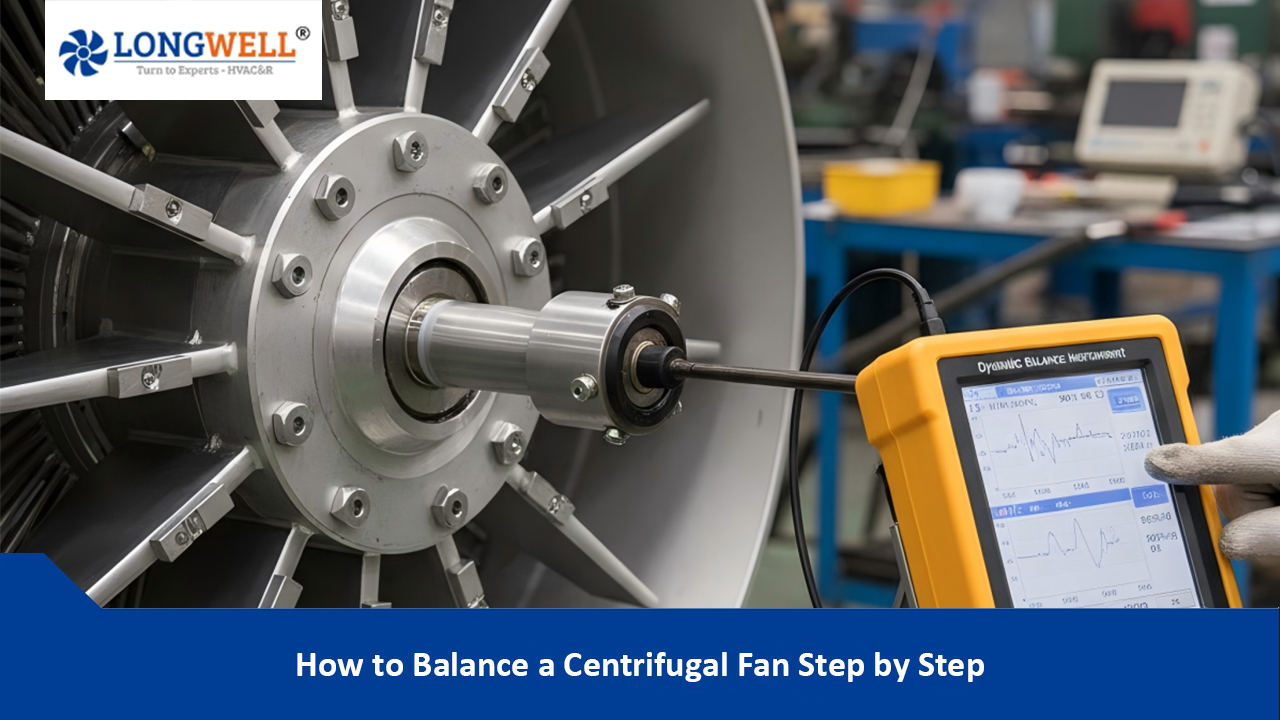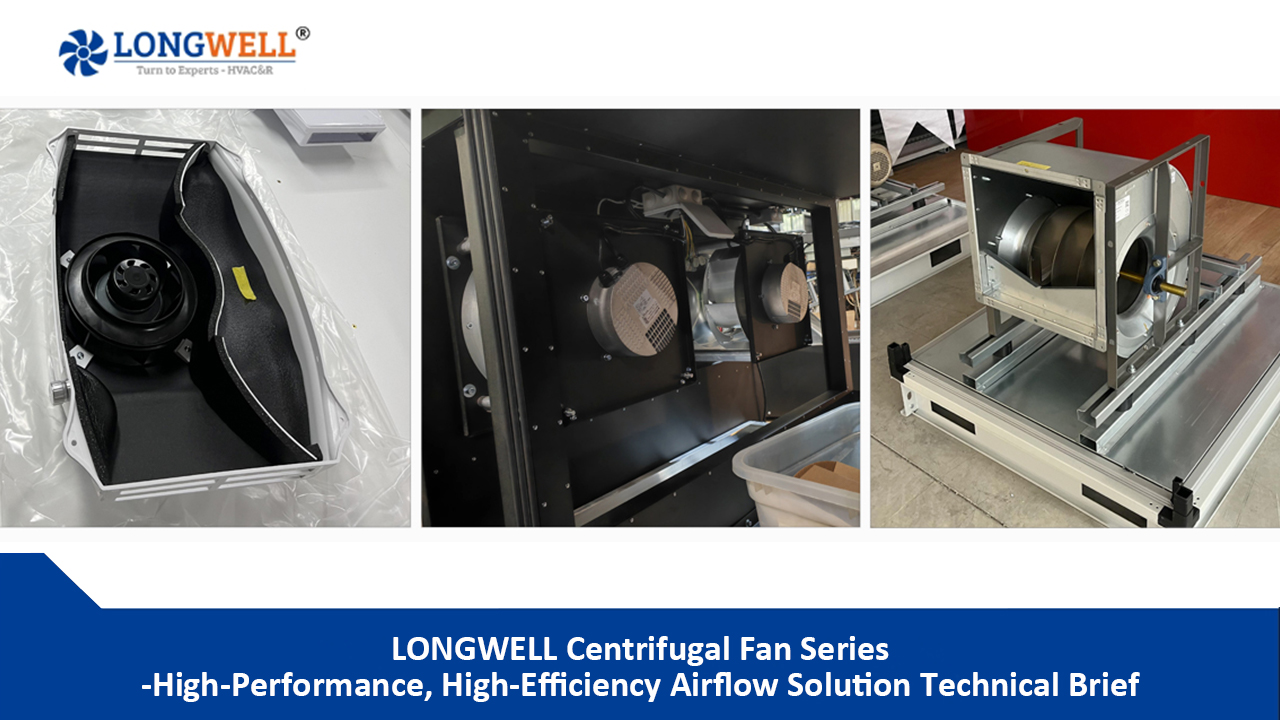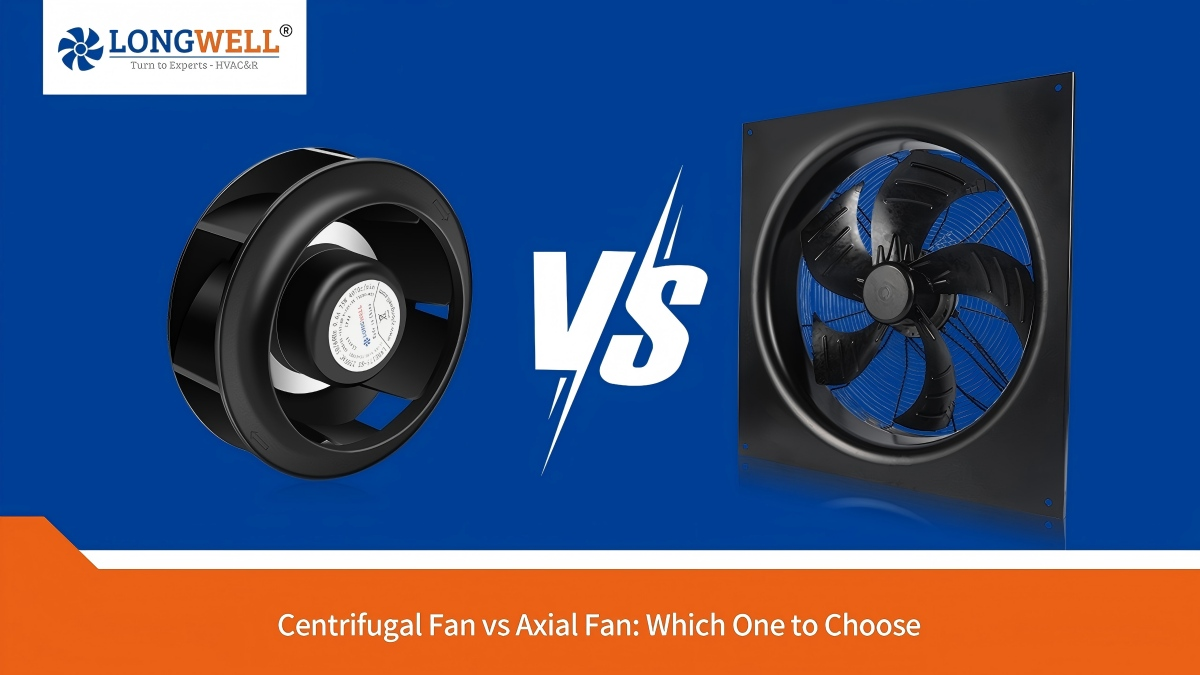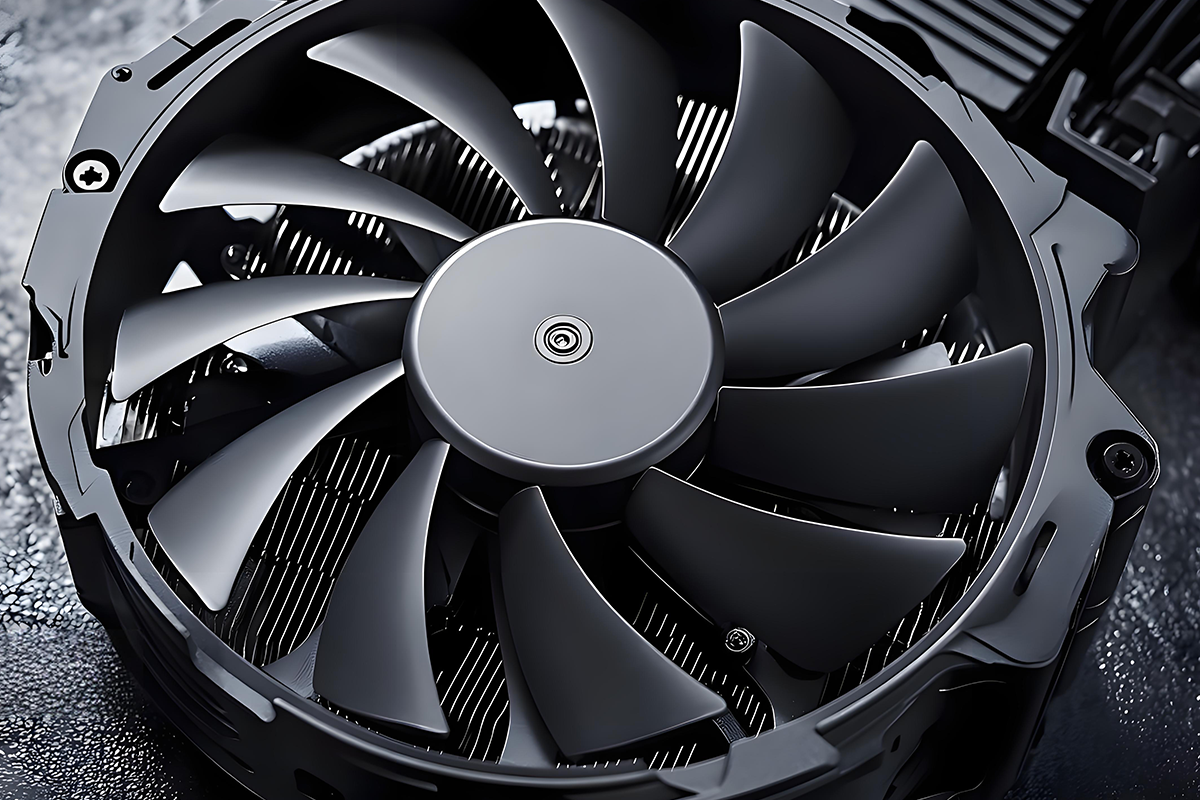
Introduction
When you look at waterproof cooling fans, you will find a blend of power and new ideas. These fans stand out because they work well in wet environments. They resist corrosion and keep everything running easily. Get ready to learn about the important features that make these fans special, like airflow, portability, and noise level. Welcome to the future of cooling with waterproof fans that are strong and effective. A refreshing experience is just around the corner.
Why Waterproof Cooling Fans Matter?
Waterproof cooling fans are very important in wet environments. They handle moisture well and help prevent problems like rust and short circuits. Regular fans can get damaged by corrosion and often don’t work well in these conditions. Waterproof fans last longer and give great protection. This makes them perfect for outdoor activities, boats, workshops, and homes in humid areas. They give a strong cooling solution, even when the conditions are tough.
Pain Points: Problems ordinary fans face in moisture (rust, short-circuiting, inefficiency)
Moisture can cause big problems for regular fans. It can lead to rust and short-circuits, making them work poorly. Fans in wet environments rust faster and break down more often. This can hurt how well they work and how long they last. That’s why it’s smart to choose waterproof cooling fans. They are built to handle tough conditions.
Benefits
Waterproof cooling fans offer several benefits. They are durable in wet environments and can last a long time. Made from materials that do not rust, they perform well in humid conditions. These fans provide good airflow to keep spaces comfortable. They are perfect for camping, being on a boat, or in industrial areas. Waterproof cooling fans are very reliable. Their ability to resist moisture and provide consistent performance makes them a great choice for many situations.
Who Needs Them? Campers, boat owners, industrial workers, and humid-region households.
Many people can benefit from waterproof cooling fans. Campers, boat owners, industrial workers, and families in wet areas are included in this group. They need reliable and powerful cooling options where it’s very humid.
Key Features to Look for When Buying Waterproof Cooling Fans
When you buy waterproof cooling fans, pay attention to a few key features. First, check the IP ratings to see how well the fan can resist water. Next, think about its strength in wet environments. You should also check the power options, like whether it is USB rechargeable or corded. Airflow is measured in CFM, which shows how well it will work. Portability is important too, so pick fans that are compact and have several ways to mount them. Lastly, consider the noise levels to make sure it operates quietly.
The materials must resist corrosion. Examples include ABS plastic and stainless steel. These choices will help the fan last longer in damp places. All of this will provide good performance and durability for your cooling needs, even in tough conditions.
IP Ratings: Break down IPX4 (splash-proof) vs. IPX7 (submersion-proof).
Knowing about IP ratings is key when choosing waterproof cooling fans. A fan with an IPX4 rating is splash-proof. It can handle some moisture. On the other hand, an IPX7 rating means the fan can be fully submerged in water for a set time without getting damaged. IPX4 fans are made to resist splashes. Meanwhile, IPX7 fans can stay underwater safely. It’s important to pick the right IP rating depending on the wet environments the fan may face. This choice helps keep the fan working well for a longer time.
Durability: Rustproof materials (ABS plastic, stainless steel).
When you choose waterproof cooling fans, pick materials that won’t rust. Good options are ABS plastic and stainless steel. These choices work well in wet environments and stop corrosion. ABS plastic keeps the fan strong, and stainless steel makes it last longer. By selecting a fan made from these materials, you can trust its performance, even in tough conditions. The strength of these rustproof materials gives you a long-lasting cooling solution for your needs.
Power: Battery life (USB rechargeable vs. corded), voltage options.
When you choose a waterproof cooling fan, think about the power options. Fans that run on batteries are lightweight and can be charged using a USB cable. Corded fans can run for as long as you need without having to recharge. Look at the voltage options too. They can affect the fan speed and airflow efficiency. Consider how you plan to use it. This will help you pick the right power source for your waterproof cooling fan.
Airflow: CFM (cubic feet per minute) for cooling intensity.
Choosing a waterproof cooling fan that has good airflow is very important for effective cooling. CFM stands for cubic feet per minute. This tells you how fast the fan runs and how well it moves air. A fan with a higher CFM rating has stronger airflow, which helps it cool better. When you pick a waterproof fan, always check its CFM rating to ensure it provides the best cooling power. This matters a lot in wet environments. In these places, efficient air circulation helps to control moisture and keep things comfortable.
Portability: Compact size, handles, and mounting options (clip-on, tripod).
You can take this waterproof cooling fan anywhere you go. It is small and can be mounted in several ways, like clip-on or on a tripod. This makes it ideal for camping, using on a boat, or working in humid areas. You will feel cool and comfortable without it taking up too much space. The fan is light and has a handy handle, making it easy to carry. You can also adjust the fan to meet your needs without any hassle.
Noise Level: Decibel ranges for quiet operation.
When choosing a waterproof cooling fan, pay attention to how loud it is. This loudness is measured in decibels. A quieter fan helps keep your space calm while delivering cool air. Look for fans that have lower decibel ratings. A fan with dual ball bearings is a good option to lower the noise. Always check the noise level information in decibels. This will help you find a fan that keeps things cool and quiet, especially where silence is key.
Top Use Cases & Recommended Models
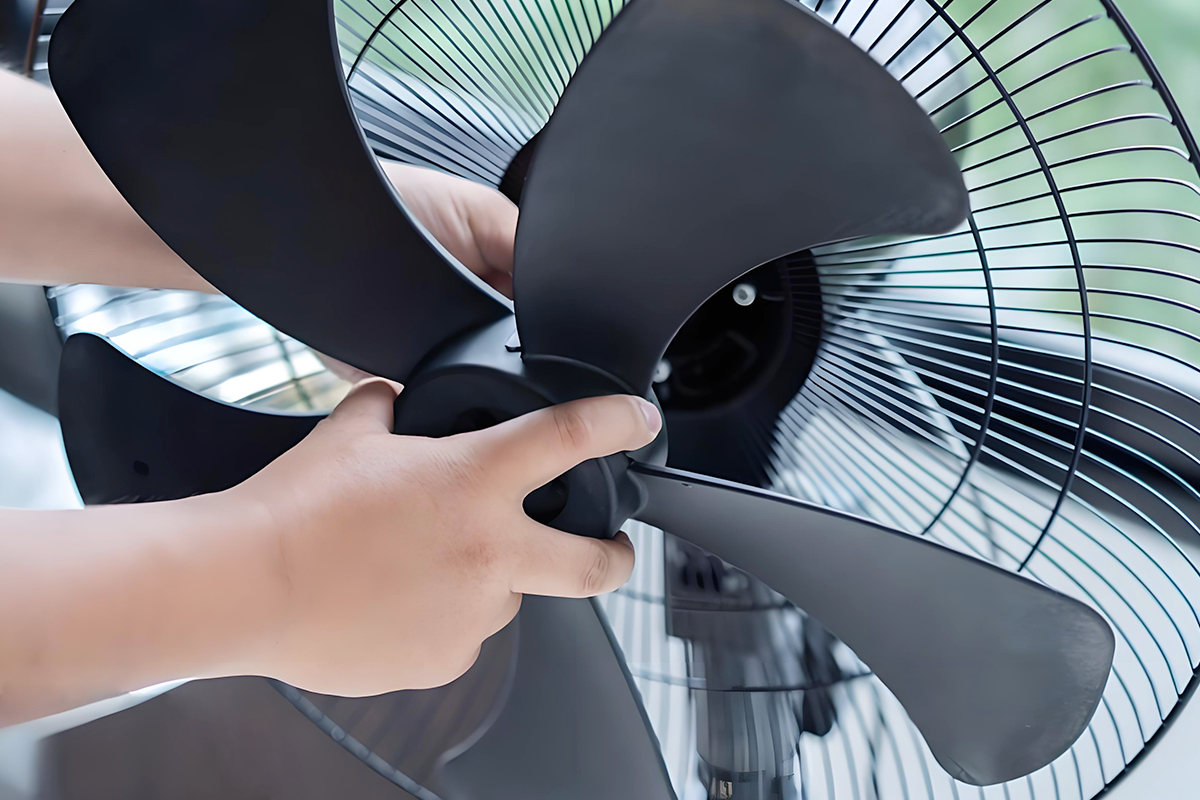
Waterproof cooling fans are great for lots of places. You can use them for outdoor activities, on boats, in workshops, and at home. The OPOLAR IP67 Rechargeable Fan works well in water, making it a great choice for outdoor fans. If you need something affordable, the Honeywell HT-9080 is a good option. The Caframo Bora Marine Fan is high quality and made for boats. For fans that are good for both inside and outside, check out the Genesis Clip-On Fan. In factories, the Lasko 3520 works well. Each fan is made for different needs, providing comfort and efficiency in many situations.
Outdoor Adventures
For outdoor fun, a good waterproof fan is very important. It helps with both moisture and heat. Choose fans made from strong materials like ABS plastic. These materials can handle bad weather. Look for fans that have a high CFM fan speed. A high fan speed is better for cooling, especially when it’s humid. Fans with dual ball bearing technology are more durable. They can last through all your adventures. Whether you are hiking, camping, or having a picnic, a waterproof fan will keep you comfortable. You can stay cool and enjoy the outdoors. You won’t need to worry about corrosion or poor performance.
Marine Use
When thinking about using fans on boats, it is very important to pick waterproof cooling fans. This is due to the wet environments you will often encounter. A speed waterproof fan made from materials that resist corrosion, like stainless steel, will last longer in salty air. Make sure to look for fans with high CFM to get good airflow in small spaces. A great choice is the Caframo Bora Marine Fan. It is reliable and works well in marine conditions. A good waterproof fan will keep you comfortable and help your boat perform at its best.
Workshops/Industrial:Heavy-duty fans for humid warehouses (e.g., Lasko 3520).
Heavy-duty fans like the Lasko 3520 are very important for humid warehouses. They are made from strong materials that resist corrosion, which helps them last longer in wet environments. These fans provide great airflow and let you control the fan speed, making them perfect for cooling large spaces. The dual ball bearing system adds to their durability, allowing for continuous use. They work well in industrial settings, focusing on performance and strength to handle tough conditions. The Lasko 3520 combines new ideas with practical use to offer the best airflow in challenging industrial environments.
Home Use:Desktop/clip-on fans for bathrooms or garages.
For home use, desktop or clip-on fans are great for areas like bathrooms or garages. These small fans cool you down without taking up much space. Look for fans that have adjustable fan speed settings. This way, you can find the setting that feels best for you. It is important that the fan can work in wet environments so it doesn’t get damaged. Choose fans made from corrosion-resistant materials to help them last longer. A waterproof fan with a dual ball bearing system can improve airflow in these areas. Also, check the airflow capacity (CFM) and noise level to make the most of your cooling time.
How to Choose the Right Waterproof Fan
Check your area for humidity and rain. Think about how light and easy to carry you want it. Consider how much power you need. The IP rating should fit the water exposure: use IPX4 for light splashes and IPX7 for deep water. Keep your budget in mind while looking for something durable. A good choice usually ranges from $30 to $200. The right choice is about balancing function, strength, and cost. Remember these points before you buy.
Step 1: Assess your environment (humidity, rain exposure).
Before you buy a waterproof cooling fan, think about the weather it will face. Look at the humidity levels and how often it rains where you live. This will help you figure out how waterproof the fan needs to be for it to work well. By considering your situation, you can find a fan that performs well in wet conditions and still keeps you cool.
Step 2: Prioritize portability vs. power.
When choosing waterproof cooling fans, think about how easy they are to carry and their power. If you want a fan you can transport, look for lightweight options. For strong airflow and cooling, pick a more powerful fan. Consider where you will mainly use the fan. Will it be for camping or in a workshop? Find a balance between portability and good cooling to make the best choice for you.
Step 3: Match IP rating to water exposure (IPX4 for light splashes, IPX7 for submersion).
Check how much water your area gets. If you only have light splashes, an IPX4 rating is enough. For full submersion, go for an IPX7 rating. The IPX4 rating can handle some moisture, while IPX7 can deal with heavy wet conditions. Knowing these ratings can help protect your fan and extend its life. Matching the right IP rating with wet environments will help your fan work properly and last longer, even when it’s wet.
Budget Tips: Balance cost vs. durability (e.g., $30–$200 range).
When you look for budget tips on waterproof cooling fans, it’s important to find a good balance between price and quality. In the $30–$200 range, you can find fans that are affordable and reliable. Think about your needs and where you plan to use the fan. This will help you understand which features are really important. Also, remember that paying a little more for a strong fan can save you money in the long run, as it may reduce how often you need to replace it. Focus on getting a fan that is durable to make sure it works well in wet environments.
Maintenance & Longevity
Taking care of your waterproof cooling fan is key for it to work well and last longer. Clean the fan regularly with a damp cloth. Don’t use strong cleaning products. Also, store it properly. Always make sure the fan is completely dry before putting it away. If you hear loud noises, feel weak airflow, or have battery issues, check the user manual for solutions. By following these easy maintenance tips, you can help your fan last longer and enjoy good airflow in many places.
Cleaning: Wipe with damp cloth; avoid harsh chemicals.
To keep your waterproof cooling fan in good shape, gently wipe it with a damp cloth. This practice helps to remove dust and dirt. Stay away from strong chemicals, as they can harm the fan’s waterproof coating and its internal parts. Cleaning like this regularly helps your fan work well in wet environments. It will give reliable cooling when you need it most. A clean fan also stops corrosion and makes sure there is good airflow, giving you a comfortable feel.
Storage: Dry completely before storing.
Dry your waterproof cooling fan completely before you store it. This will help prevent problems from moisture. Clean it with a damp cloth, and avoid using strong chemicals. Make sure all parts are dry to stop corrosion and protect the motor. When you store your fan properly, it will last longer and work well when you need it. Keep your fan in a dry place to avoid any issues.
Troubleshooting: Fixing motor noise, weak airflow, or battery issues.
If you hear noise from your waterproof cooling fan or feel weak airflow, or have battery problems, you can follow these steps to fix it. First, check if anything is blocking the fan. Make sure the fan is clean and clear of dirt. If the motor is still noisy, try putting some oil on the bearings to help it run better. Weak airflow might mean the filter or impeller is clogged. Clean or change them if you need to. For battery issues, try recharging or changing the batteries to make sure it works well. Regular maintenance can help stop these problems from happening again.
Top 5 Waterproof Fans in 2025
The Opolar IP67 Rechargeable Fan is good to use in water. The Honeywell HT-9080 is a great choice if you want a fan that is affordable. The Caframo Bora Marine Fan works well on boats and in marine areas. The Genesis Clip-On Fan can be used indoors or outdoors, which offers you flexibility. The Lasko 3520 is very strong and is a good pick for humid places. These top 5 waterproof fans in 2024 give you many options. Whether you need a fan for water use or tough industrial settings, they offer durability and effectiveness in wet environments.
OPOLAR IP67 Rechargeable Fan (Best for submersion).
The Opolar IP67 rechargeable fan is perfect for wet areas. It works well in rainy or watery conditions. This fan is powerful and waterproof, helping you stay cool when the weather is rough. It has great fan speed and airflow, making it useful in many places. The dual ball bearing system helps it last longer and need less upkeep, making it a good option for long-term use. You can rely on the Opolar IP67 rechargeable fan for good cooling and trustworthiness.
Honeywell HT-9080 (Top budget pick).
Are you searching for a cheap waterproof cooling fan? The Honeywell HT-9080 is a smart pick. This fan offers good fan speed and features a dual ball bearing system. It performs well in wet environments. Made with materials that resist corrosion, this AC fan provides reliable airflow and has a long lifespan. It is a great choice if you want a high-quality fan for a lower price. Enjoy a nice breeze without spending too much.
Caframo Bora Marine Fan (Premium marine-grade).
The Caframo Bora Marine Fan is a great choice for boats. It is built with strong materials that handle wet environments well. This fan provides good airflow and features a dual ball bearing system. This design helps it work well, even in areas with corrosion. Boat owners like the Caframo Bora Marine Fan because it is high-quality and lasts a long time. It keeps the space cool and stands up to moisture and corrosion.
Genesis Clip-On Fan (Versatile indoor/outdoor).
The Genesis clip-on fan is a great choice for inside and outside use. It’s flexible and easily fits in many spaces. You can use it at home or feel cool during outdoor events. This fan provides a nice breeze. Its good airflow and compact size help you cool off anywhere. Enjoy the comfort of the Genesis clip-on fan wherever you are.
Lasko 3520 (Industrial strength).
The Lasko 3520 is a strong and waterproof cooling fan. It performs well even in humid conditions. This fan is perfect for warehouses and industrial areas where being resistant to moisture is important. It delivers great airflow and is made from materials that resist corrosion, ensuring it lasts a long time. If you want a reliable cooling solution for tough environments, the Lasko 3520 is a good option.
Conclusion
In conclusion, when choosing a cooling fan, you should think about durability, safety, and flexibility. It’s important to find a fan that can resist moisture and corrosion. The right fan speed and airflow are essential for use in wet environments to make sure the fan lasts. Check out our top picks for waterproof cooling fans to feel cool wherever you are. Be sure to read the warranties and customer reviews to feel confident in your decision. Are you ready to choose the best one? Start by considering the important features you need and your own cooling preferences. Stay cool and stay informed!
Summary: Reinforce the value of durability, safety, and adaptability.
When choosing waterproof cooling fans, pay attention to three key things: durability, safety, and adaptability. These factors help the fan work well for a long time, even in wet environments like greenhouses or boats. Think about the fan speed, corrosion resistance, and airflow efficiency to achieve the best cooling effect. It is important to get a quality fan that has dual ball bearing and the correct IP ratings for dependability. By considering these features, you can feel safe and comfortable, whether you are outdoors or in a factory. Make smart choices to stay cool and protected wherever you are.
Bonus Tip: Check warranties and customer reviews befo
Check the warranties and read customer reviews before buying a waterproof cooling fan. A good warranty protects you, especially in wet environments. Customer feedback on sites like Amazon gives useful information about how well the fan works, how long it lasts, and how noisy it is. Look for models with solid warranties and positive reviews to help you decide. Make sure the fan meets your needs for durability, safety, and cooling power. Research and user reviews can guide you to a good and long-lasting cooling solution.
Frequently Asked Questions
Can waterproof cooling fans be used in all outdoor conditions?
Waterproof cooling fans are perfect for outdoor activities. You can use them when you go camping, boating, or at industrial jobs because they can handle moisture. However, if it rains heavily or they are fully underwater, they might not work as well.
Are they safe around pools?
Waterproof cooling fans are safe to use around pools. They have strong materials that won’t rust. It is important to check the fan’s IP rating. This rating shows that it can be near water without problems. Always follow safety rules. Make sure to keep electrical devices away from direct contact with water.
Can I leave a waterproof fan outside in the rain?
Waterproof fans are made to survive rain due to their strong design and IP ratings. It is key to follow the instructions from the maker. This keeps the fans safe and helps them last longer.
